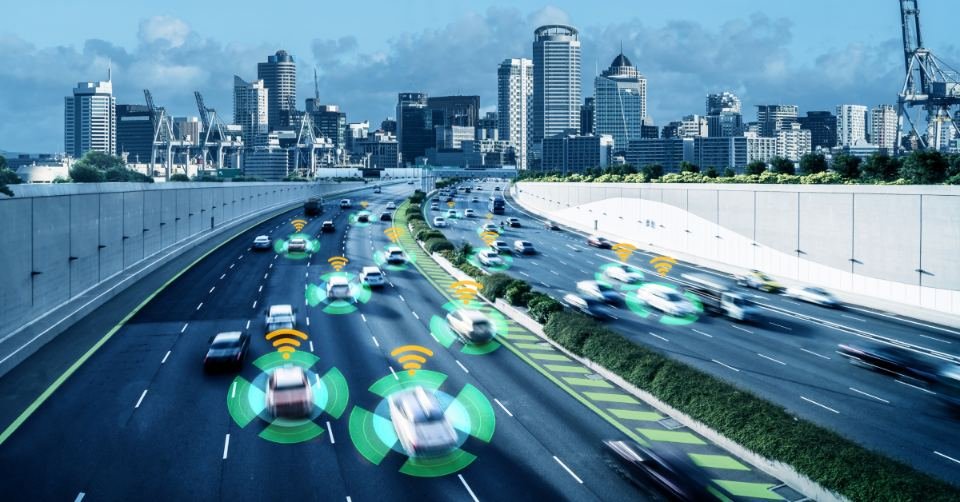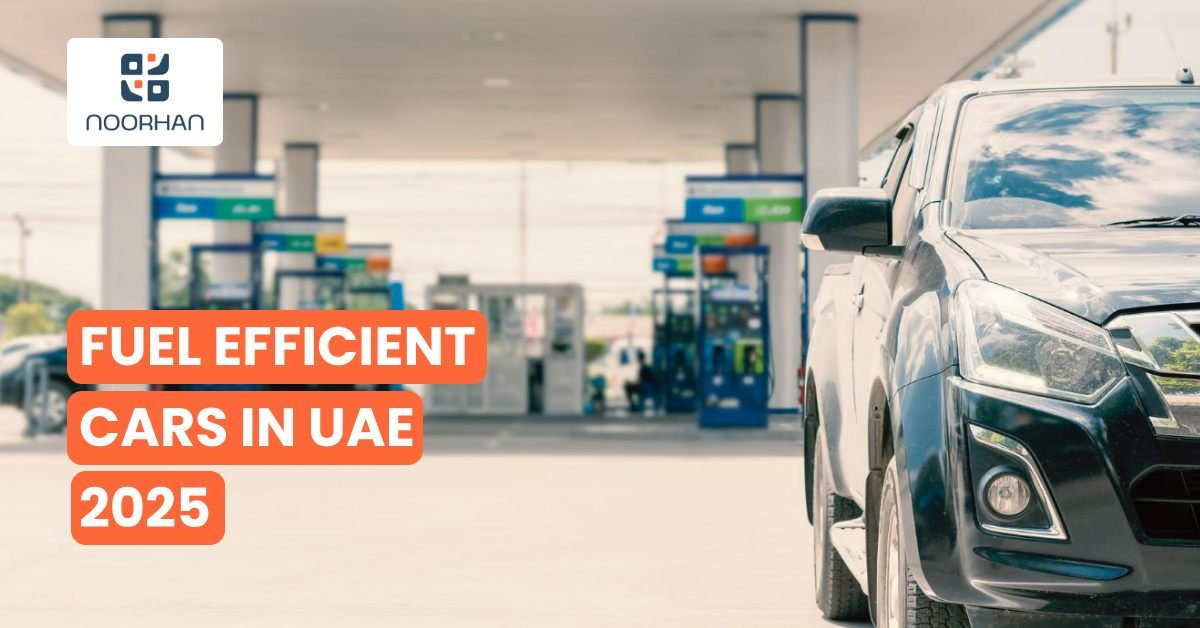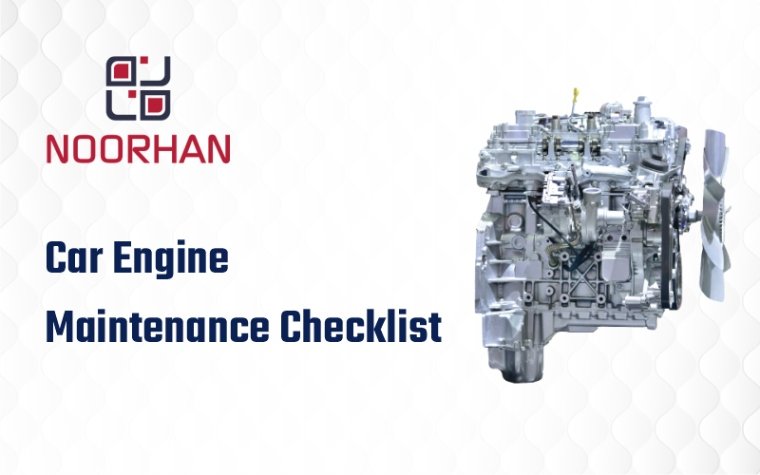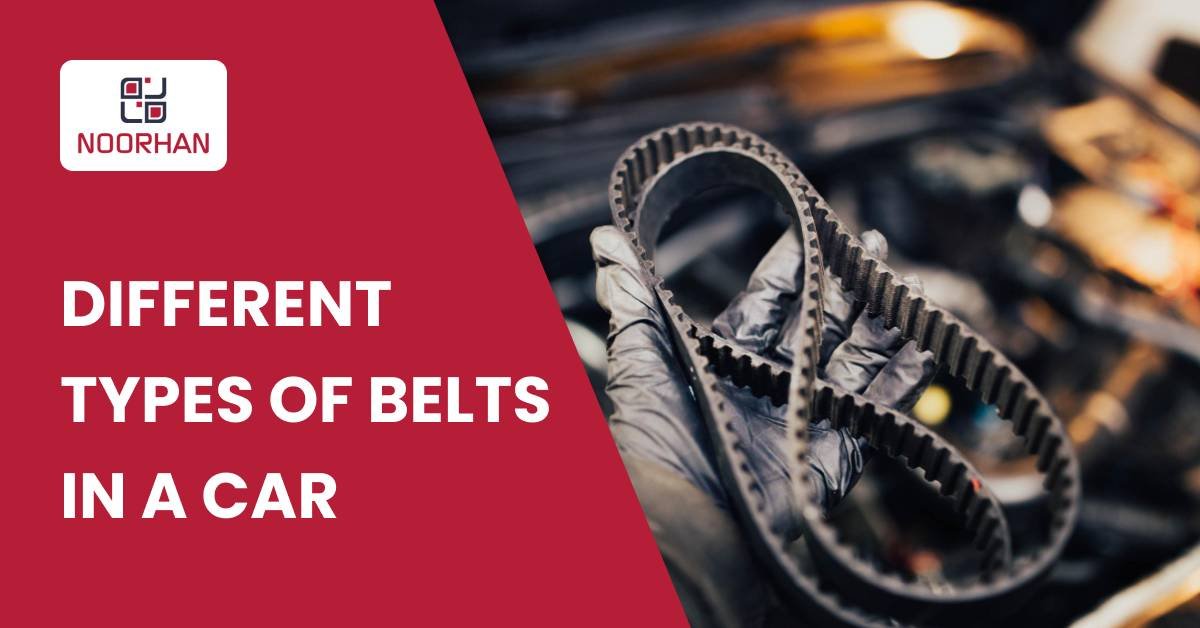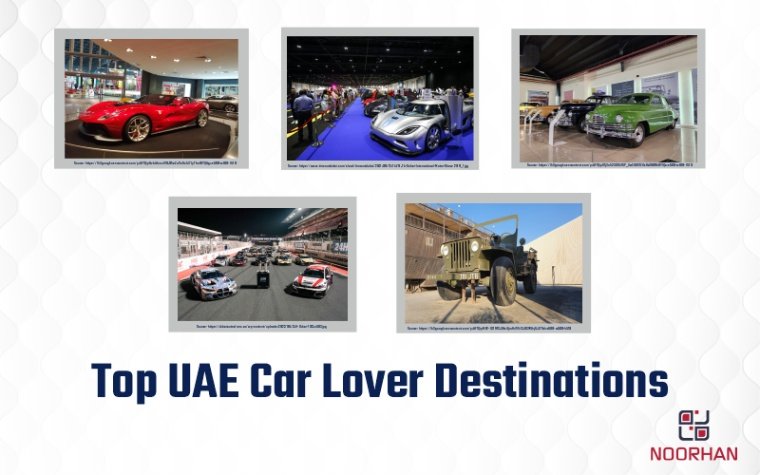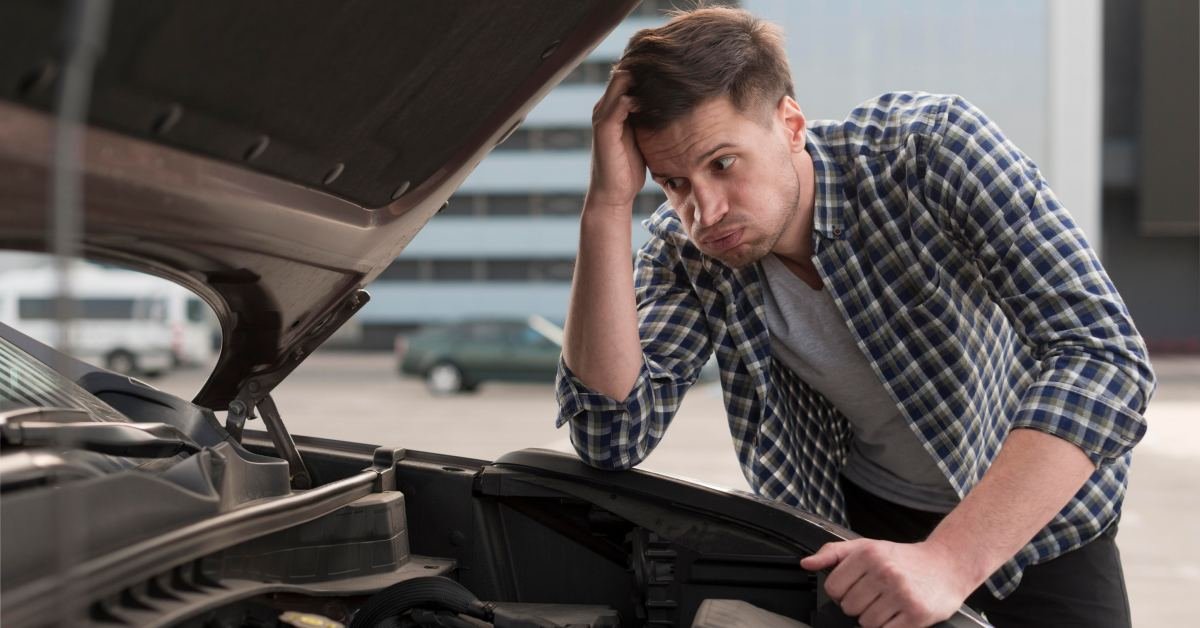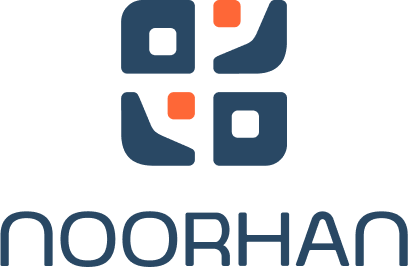-
What is V2X TechnologyWhat is V2X Technology
-
Types and ApplicationsTypes and Applications
-
How it WorksHow it Works
-
Infrastructure ImplementationInfrastructure Implementation
-
V2X vs Traditional PerformanceV2X vs Traditional Performance
-
Economic AnalysisEconomic Analysis
-
Equipment and TechnologyEquipment and Technology
-
Technical ImplementationTechnical Implementation
-
FAQsFAQs
-
Regional Implementation BenefitsRegional Implementation Benefits
V2X technology represents the next evolution in traffic management, enabling wireless communication between vehicles, infrastructure, pedestrians, and networks. Dubai’s Roads and Transport Authority announced plans deploying this technology across 620 intersections by 2028, marking the largest Middle East implementation addressing congestion and safety through direct vehicle-infrastructure communication.
V2X stands for Vehicle-to-Everything, wireless communication enabling cars to exchange data with other vehicles, traffic infrastructure, pedestrians, and networks within 300-500 meter range. The system transmits safety messages 10 times per second, sharing speed, location, direction, and intended maneuvers. When a vehicle four cars ahead brakes suddenly, V2X alerts following drivers before the brake lights become visible. When traffic signals detect approaching vehicles, they adjust timing reducing unnecessary stops.
For Dubai residents where average commuting times consume significant daily hours, understanding what V2X technology is matters because the 620-intersection deployment addresses congestion and safety through direct vehicle-infrastructure communication. RTA projects significant congestion reduction and fewer intersection accidents once the system reaches full operation serving equipped vehicles by 2028.
What is V2X Technology Explained Simply
Basic Definition and Core Concept
V2X technology creates wireless communication networks allowing vehicles to talk with everything around them. The “V” represents vehicle while “X” encompasses vehicles, infrastructure, pedestrians, networks, clouds, and devices. This communication happens automatically without driver intervention using dedicated radio frequencies or cellular networks.
Think of V2X as giving vehicles the ability to see around corners and through obstacles. Traditional sensors including cameras and radar detect only what sits in direct line of sight. V2X receives broadcast messages from hidden vehicles approaching blind intersections, pedestrians stepping from behind parked cars, and traffic signals about to change phases. This 360-degree awareness eliminates blind spots inherent in sensor-only systems.
The technology works through small radio units installed in vehicles and along roadside infrastructure. These units broadcast and receive messages containing position, speed, heading, and status information. When a vehicle detects potential collision based on received data, it alerts the driver through dashboard displays or audio warnings. The entire process from detection to warning happens within 0.1 to 1.2 seconds, faster than human reaction times.
Six Types of V2X Communication
Vehicle-to-Vehicle Communication
Vehicle-to-Vehicle communication allows cars to share data directly with nearby vehicles. When a car ahead brakes hard, following vehicles receive instant notification before brake lights illuminate. This early warning prevents chain-reaction collisions common on congested roads like Sheikh Zayed Road during morning rush hours. The system works across 300 meters in all directions regardless of visual obstructions.
Vehicle-to-Infrastructure Communication
Vehicle-to-Infrastructure connects cars with traffic signals, road sensors, cameras, and roadside units. Traffic lights broadcast phase timing allowing vehicles to adjust speed approaching intersections, arriving during green phases instead of stopping at reds. Infrastructure sensors detect accident scenes or construction zones ahead, warning approaching drivers to slow down or change lanes safely.
Vehicle-to-Pedestrian Communication
Vehicle-to-Pedestrian protects vulnerable road users through smartphone applications or wearable devices broadcasting their locations. When pedestrians carrying V2X-enabled phones approach crosswalks, nearby vehicles receive alerts even when the person remains hidden behind obstacles. This proves valuable around Dubai Mall, City Walk, and Jumeirah Beach Residence where heavy pedestrian traffic mixes with vehicle movements.
Vehicle-to-Network Communication
Vehicle-to-Network connects cars to cellular networks accessing real-time traffic data, weather conditions, and hazard alerts from transportation management centers. RTA’s Dubai Traffic Systems Centre broadcasts information about accidents, road closures, and route recommendations through network connections reaching vehicles beyond direct radio range.
Vehicle-to-Cloud Communication
Vehicle-to-Cloud enables access to cloud-based services including updated maps, predictive weather, and navigation routing. Cloud connections support applications requiring computing power or large datasets impractical to store locally in vehicles. The system helps drivers plan routes avoiding predicted congestion before leaving home.
Vehicle-to-Device Communication
Vehicle-to-Device interfaces with personal devices, home systems, parking infrastructure, and electric vehicle chargers. Vehicles communicate with smart home systems preparing arrival, parking systems identifying available spaces, and EV chargers scheduling charging times based on electricity rates and grid conditions.
V2X Communication Types and Applications
Communication Range and Performance
| Communication Type | Function | Range | Primary Safety Benefit | Dubai Application | Response Time |
|---|---|---|---|---|---|
| Vehicle-to-Vehicle (V2V) | Cars exchange data with nearby vehicles | 300 meters coverage | Prevents collisions between vehicles | Sheikh Zayed Road collision prevention | 0.1-0.5 seconds |
| Vehicle-to-Infrastructure (V2I) | Vehicles communicate with traffic signals, road sensors | 500 meters at intersections | Reduces intersection accidents | 620 intersections deployment planned | 0.6-1.2 seconds |
| Vehicle-to-Pedestrian (V2P) | Vehicles detect pedestrians via smartphones, wearables | 150 meters pedestrian detection | Protects vulnerable road users | Pedestrian zones (Dubai Mall, JBR) | 0.3-0.8 seconds |
| Vehicle-to-Network (V2N) | Connects to cellular networks for traffic data | Cellular network coverage area | Real-time traffic hazard alerts | RTA traffic management integration | 0.5-2.0 seconds |
| Vehicle-to-Cloud (V2C) | Accesses cloud services for maps, weather, routing | Internet connectivity required | Predictive routing, condition warnings | Smart city data sharing | 1-5 seconds |
| Vehicle-to-Device (V2D) | Interfaces with personal devices, home systems | 10-50 meters Bluetooth/WiFi | Convenient safety integration | Connected home, parking systems | 0.2-1.0 seconds |
Technology Standards and Protocols
Two competing V2X standards exist globally. Dedicated Short-Range Communication operates on 5.9 GHz radio frequency allocated for transportation safety applications. This approach developed first in United States and Europe, offering low latency and reliable performance without depending on cellular network coverage.
Cellular V2X leverages existing 4G LTE and newer 5G cellular networks for vehicle communication. This standard developed in China and gained adoption across Asia and Middle East due to extensive cellular infrastructure already deployed. Dubai selected C-V2X technology for its intersection project, taking advantage of 5G network coverage across the emirate.
Basic Safety Messages represent the fundamental data packets exchanged between V2X participants. These messages contain vehicle identification, GPS coordinates, speed, heading, acceleration, brake status, steering angle, and vehicle size. Transmitting 10 times per second creates near real-time awareness of dynamic traffic conditions. Message size remains small, around 300 bytes, enabling thousands of vehicles broadcasting simultaneously without network congestion.
How V2X Technology Actually Works
The Eight-Step Communication Process
Data Collection Process
Data collection begins with vehicle sensors gathering speed from wheel sensors, location from GPS, direction from gyroscopes, and acceleration from accelerometers. These sensors already exist in modern vehicles for stability control, navigation, and driver assistance systems. V2X uses this existing data for communication purposes rather than requiring new sensor installations.
Message Creation and Formatting
Message creation packages collected data into standardized Basic Safety Message format. The onboard V2X communication unit formats data following protocol specifications ensuring all V2X participants understand received messages regardless of vehicle manufacturer. This standardization enables Toyota vehicles communicating with Nissan cars and RTA infrastructure seamlessly.
Wireless Transmission Process
Wireless transmission broadcasts the message using dedicated radio or cellular connection. The transmission happens 10 times per second updating recipient systems with current vehicle status. Radio waves propagate 300-500 meters in all directions, reaching vehicles and infrastructure within this coverage zone. The broadcast requires no pairing or connection establishment, simply radiating data for any receiver to detect.
Message Reception and Filtering
Message reception occurs when nearby V2X-equipped vehicles and infrastructure detect broadcasts. Receiving systems capture all messages from surrounding transmitters, potentially handling hundreds of simultaneous broadcasts in dense traffic. The system filters received messages identifying those relevant to current vehicle based on proximity and trajectory.
Data Processing and Analysis
Data processing analyzes received messages for potential conflicts. Algorithms calculate whether current paths will intersect based on positions, speeds, and headings. The system predicts positions several seconds ahead identifying collision risks before they become visible to drivers. Processing happens within 50-200 milliseconds enabling timely warnings.
Alert Generation System
Alert generation occurs when algorithms identify genuine hazards requiring driver attention. Not every received message triggers alerts since most nearby vehicles pose no immediate threat. The system generates warnings only for actual risks including imminent collisions, sudden obstacles, or unsafe situations. This selective alerting prevents driver fatigue from excessive false alarms.
Driver Notification Methods
Driver notification displays warnings through dashboard screens, head-up displays, or audio alerts. The notification method depends on urgency and severity. Critical warnings use attention-grabbing audio tones combined with visual displays. Less urgent notifications appear as dashboard icons or text messages. The interface integrates with vehicle infotainment systems supporting CarPlay and Android Auto.
Automated System Response
System response may include automatic interventions if vehicles have electronic safety systems. When collision appears unavoidable and driver hasn’t reacted, automatic emergency braking may activate. Stability control might adjust power or apply selective braking preventing loss of control. These automated responses work in conjunction with human driving rather than replacing driver control.
Safety Applications and Message Types
Forward Collision Warning Systems
Forward collision warning represents the most common V2X safety application. When vehicles ahead brake suddenly or traffic stops unexpectedly, following drivers receive warnings before recognizing the situation visually. This early notification proves most valuable at highway speeds where reaction time affects stopping distances. The system helps prevent rear-end collisions representing a significant portion of traffic accidents.
Intersection Movement Assistance
Intersection movement assist addresses accidents occurring at intersections. Vehicles approaching crossings receive information about other vehicles in crossing lanes, detecting conflicts that would result in T-bone collisions. The system identifies vehicles hidden by buildings, trucks, or other obstructions at blind intersections common throughout older Dubai neighborhoods in Deira and Bur Dubai.
Red Light Violation Prevention
Red light violation warning alerts drivers approaching intersections at speeds too high to stop safely before signal changes. The system calculates whether current speed allows stopping before entering intersection versus proceeding through during yellow phase. This prevents drivers accelerating through yellows then entering on reds, reducing intersection crashes.
Emergency Vehicle Priority
Emergency vehicle approaching notifications alert civilian drivers when ambulances, police cars, or fire trucks approach from behind or perpendicular directions. This enables drivers clearing paths for emergency vehicles rather than discovering them only when sirens become audible. For Dubai’s dense traffic on Sheikh Zayed Road during peak hours, early emergency vehicle warnings facilitate faster emergency response.
Construction Zone Warnings
Work zone warnings broadcast from roadside equipment near construction areas alert drivers well ahead of work zones. This provides time for safe lane changes rather than abrupt maneuvers when cones appear. Dubai’s infrastructure development including new metro lines and road expansions benefits from work zone warnings reducing accidents involving construction workers and equipment.
Curve Speed Advisory
Curve speed warnings help drivers unfamiliar with routes adjust speeds before curves. The infrastructure broadcasts recommended speeds for upcoming curves based on geometry and surface conditions. This application proves valuable for tourists and new residents navigating unfamiliar roads across Dubai and surrounding emirates.
Dubai RTA Traffic Infrastructure Implementation
Project Scope and Geographic Coverage
Dubai RTA traffic management initiatives include V2X deployment across signalized intersections covering traffic signals in the emirate. This implementation ensures consistent V2X availability rather than isolated pilot areas. The project covers major corridors including Sheikh Zayed Road from Trade Centre to Abu Dhabi border, Emirates Road through Dubai Silicon Oasis and International City, and Mohammed bin Zayed Road connecting northern and southern Dubai.
Geographic coverage extends from established areas including Deira, Bur Dubai, and Jumeirah through newer developments including Business Bay, Dubai Marina, Downtown Dubai, Dubai Sports City, and Arabian Ranches. Northern emirates routes including Emirates Road toward Sharjah and E311 toward Ajman receive infrastructure supporting vehicles commuting from these areas into Dubai employment centers.
The implementation covers traffic volume based on RTA traffic monitoring data. This coverage ensures daily commutes benefit from V2X regardless of routes. Residents living anywhere in Dubai and working at major employment centers including DIFC, Business Bay, Dubai Media City, Dubai Internet City, or Dubai Silicon Oasis will experience V2X capabilities throughout their journeys.
Priority deployment focuses first on highest-traffic intersections experiencing frequent congestion or elevated accident rates. Sheikh Zayed Road intersections with Al Khail Road, Umm Suqeim Road, and Jumeirah Beach Road receive early deployment given high traffic volumes. Business Bay intersections connecting to Sheikh Zayed Road and Al Khail Road follow as secondary priority given dense commercial development generating heavy peak-hour traffic.
Implementation Timeline and Development Phases
Phase 1 Infrastructure Development
Phase 1 covering infrastructure preparation includes traffic signal upgrades, roadside unit installations, and communication network deployment. Existing traffic signals receive new cabinets housing V2X equipment. Roadside units mount on signal poles broadcasting intersection geometry, lane configurations, and signal phase timing. The 5G cellular network supporting C-V2X receives enhancement for vehicle communication requirements.
Equipment procurement and installation happen with system testing beginning before opening to public use. RTA engineers validate message formats, timing accuracy, and system reliability. Digital twin technology enables virtual testing of traffic scenarios identifying potential issues before real-world deployment affects actual traffic.
Phase 2 Operational Deployment
Phase 2 brings full operational deployment with active vehicle participation. Automotive manufacturers including brands sold in UAE markets begin delivering V2X-equipped vehicles. Aftermarket devices become available enabling existing vehicles joining the V2X network. Mobile applications supporting Vehicle-to-Pedestrian communication launch for public download.
Public awareness campaigns educate drivers about V2X capabilities and benefits. RTA provides information through websites, social media, and traffic radio broadcasts explaining how the system works and what drivers should expect. Training materials help drivers understand dashboard warnings and appropriate responses to different alert types.
Full system operation reaches maturity as equipped vehicle population grows and infrastructure proves reliability. RTA monitors system performance through data analytics identifying intersections achieving expected benefits and those requiring adjustments. Continuous refinement improves signal timing algorithms and hazard detection thresholds based on operational experience.
Integration with Smart City Infrastructure
Traffic Management System Integration
The V2X deployment integrates with Dubai’s smart city infrastructure managed through RTA’s traffic management systems. This facility monitors traffic flow across the emirate using cameras, sensors, and connected systems. V2X adds vehicle-originated data supplementing fixed infrastructure sensors with mobile data from vehicles acting as moving sensors.
Salik toll collection system integration enables seamless toll charging for V2X-equipped vehicles without requiring separate toll tags. The vehicle identification embedded in V2X messages handles toll transactions automatically. This convenience encourages V2X adoption through tangible benefits beyond safety improvements.
Public Transport System Coordination
Dubai Metro and bus systems coordinate with V2X infrastructure providing priority signal timing when running behind schedule. Public transport vehicles equipped with V2X units receive green light extensions or red light reductions maintaining schedule adherence. This multi-modal integration improves public transport reliability encouraging ridership.
Parking and Electric Vehicle Integration
Parking systems communicate available space information to approaching vehicles through V2X messages. Drivers receive notifications about parking availability before reaching destinations, reducing time spent searching for spaces. This reduces congestion in commercial areas including Dubai Mall, Business Bay, and DIFC during peak parking demand periods.
Electric vehicle charging infrastructure broadcasts charger availability and pricing through V2X networks. EV drivers receive information about nearby charging stations, real-time availability, and current electricity rates. This supports Dubai’s electric vehicle adoption goals by improving charging convenience addressing range anxiety concerns.
Expected Benefits and Performance Objectives
Traffic Flow Improvement Projections
Traffic flow improvements come from signal timing responding to actual traffic rather than fixed schedules, smoother traffic from reduced sudden stops, and better route choices from real-time congestion information. For commuters spending significant time daily in traffic, improvements save time daily and hours annually.
Travel time improvements across routes based on RTA simulations using digital twin technology. The improvement varies by time of day with peak hour routes seeing larger gains than off-peak travel. Morning commute from Sharjah to Business Bay could reduce travel time saving minutes each direction or time weekly for five-day work schedules.
Safety Enhancement Targets
Accident reduction projections indicate fewer intersection collisions based on V2X safety application effectiveness measured in other deployments. Intersection accidents cause congestion beyond the immediate crash impact as traffic backs up waiting for accident clearance. Reducing these incidents improves both safety and traffic flow simultaneously.
Each prevented accident saves emergency response costs, medical expenses, vehicle repairs, and productivity losses. With intersection accidents averaging costs including emergency response, medical treatment, vehicle repairs, and productivity losses, preventing incidents generates substantial returns.
Environmental and Economic Impact
Fuel consumption and emissions decline through reduced idling at traffic signals, smoother acceleration patterns, and route selections avoiding congestion. RTA estimates fuel savings across the vehicle fleet translating to annual savings for drivers. The environmental benefit includes proportional carbon dioxide emission reductions supporting Dubai’s sustainability goals.
Economic benefits through accident reduction justify infrastructure investment. Combined with congestion reduction benefits, total annual benefits yield positive return on investment. Insurance industry impacts include potential premium reductions for V2X-equipped vehicles as accident risk decreases.
V2X Technology Performance Compared to Traditional Systems
Detection and Response System Comparison
Traditional traffic systems rely on fixed infrastructure including cameras, loop detectors embedded in pavement, and radar sensors monitoring locations. These sensors detect only vehicles passing directly through coverage zones, creating gaps in system awareness. Cameras require line of sight degraded by weather conditions including fog, heavy rain, and dust storms common during UAE summer months.
V2X creates distributed sensor networks where every equipped vehicle broadcasts its status. This mobile sensor approach provides coverage wherever vehicles travel rather than only at fixed sensor locations. The system maintains performance regardless of weather since radio frequencies used for V2X penetrate fog, rain, and dust without degradation.
Response speed differs dramatically between systems. Traditional infrastructure detects vehicles, processes camera footage or sensor data, makes decisions, then implements responses. This sequential process requires seconds from initial detection to traffic management response. V2X communication happens in fractions of seconds from vehicle data collection to receiving vehicle alert, enabling preventive rather than reactive traffic management.
Predictive capability represents perhaps the largest difference. Traditional systems respond to current conditions after problems develop. V2X predicts conflicts before they occur through shared vehicle intentions. When a car plans to change lanes, surrounding vehicles receive advance notification rather than reacting after the lane change begins. This predictive awareness prevents problems rather than responding after they appear.
Hidden hazard detection proves impossible for camera-based systems. Vehicles or pedestrians behind buildings, trucks, or other obstructions remain invisible to fixed cameras until emerging into camera views. V2X receives broadcasts from hidden vehicles and pedestrians even when visual contact remains impossible. This capability proves most valuable at blind intersections throughout Dubai’s older neighborhoods.
Performance Comparison Analysis
| Feature | Traditional Traffic Systems | V2X Technology Systems | Improvement Factor | Dubai Traffic Impact |
|---|---|---|---|---|
| Detection Method | Cameras, loop detectors, radar sensors | Direct wireless vehicle broadcasts | 360° awareness vs fixed camera views | Entire vehicle fleet becomes sensor network |
| Coverage Area | Limited to sensor installation points | 300-500 meter radius per vehicle/unit | Broader coverage area | Covers Sheikh Zayed Road full length |
| Weather Dependency | Cameras degraded by fog, dust, rain | Unaffected by weather conditions | Weather-independent reliability | Maintains performance in sandstorms |
| Predictive Capability | Reactive only (responds to current state) | Predictive (shares intentions, plans) | Prevents vs reacts to incidents | Prevents congestion before it forms |
| Multi-Vehicle Coordination | No direct vehicle communication | Full coordination between all vehicles | Full coordination vs independent operation | Multiple intersections simultaneously |
| Hidden Hazard Detection | Cannot detect hidden vehicles/pedestrians | Receives data from obstructed vehicles | See around corners and through obstacles | Detects vehicles in blind intersections |
| Response Speed | Multiple seconds response | Sub-second total response | Faster detection and response | Reduces average stop time |
| Infrastructure Cost | Lower initial cost per intersection | Higher initial cost per intersection | Higher initial, lower long-term maintenance | ROI through accident reduction |
Weather Performance in UAE Climate Conditions
Dubai experiences unique weather challenges including intense summer heat exceeding 50°C, occasional sandstorms reducing visibility to under 50 meters, and rare but heavy rainfall events causing localized flooding. Traditional camera-based traffic management suffers during these conditions when visual sensors cannot function effectively.
Summer dust and haze reduce camera effectiveness by creating visual obstructions requiring enhanced image processing. The processing delays increase system response times when quick reactions matter most. V2X radio communication operates identically in clear or hazy conditions since radio waves penetrate atmospheric particulates without attenuation.
Sandstorms occurring occasionally between March and June create hazardous driving conditions when visibility drops suddenly to 20-50 meters. Cameras become unusable during severe sandstorms while radar performance degrades. V2X maintains full functionality during sandstorms since radio frequencies penetrate sand particles without signal loss. This reliable operation during worst conditions provides safety benefits when drivers need assistance most.
Heavy rainfall events though infrequent create water spray from vehicles reducing camera visibility and causing road surface water pooling. Cameras cannot detect vehicles through dense spray clouds while V2X maintains communication. The system warns drivers about sudden slowdowns ahead even when spray obscures brake lights and tail lights of leading vehicles.
Temperature extremes affect electronic equipment performance with summer ambient temperatures regularly exceeding 45°C and pavement surface temperatures reaching 70°C during afternoon hours. The V2X equipment uses industrial-grade components rated for extended temperature ranges ensuring reliable operation throughout UAE climate conditions. Traditional cameras require active cooling systems adding maintenance requirements and failure points.
Economic Analysis for Dubai Implementation
Infrastructure Investment Requirements
Initial infrastructure investment covers intersection equipment, installation labor, network connectivity, and system integration with existing RTA infrastructure. Per-intersection costs include roadside units, traffic signal upgrades, communications equipment, and installation labor. This represents higher initial investment compared to traditional camera-based systems.
Operating costs remain lower for V2X infrastructure compared to camera systems. Cameras require regular cleaning, lens replacement, and housing maintenance in dusty UAE climate. Processing servers demand cooling in climate-controlled facilities consuming electricity. V2X roadside units operate passively with minimal moving parts and no cleaning requirements. Lower operating costs help offset higher initial investments through long infrastructure lifespans.
Economic Returns and Benefit Analysis
Accident reduction benefits justify costs through direct economic savings. Intersection accident reduction prevents incidents. With average accident costs including emergency response, medical treatment, vehicle repairs, and productivity losses, annual savings achieve investment payback before considering congestion reduction benefits.
Congestion reduction provides additional economic benefits through reduced fuel consumption, decreased productivity losses from travel time, and lower vehicle operating costs from reduced stop-start driving patterns. Economic benefits from congestion improvements combined with accident reduction savings yield positive return on investment.
Insurance industry impacts include potential premium reductions for V2X-equipped vehicles as accident risk decreases. Insurance companies reduced premiums for vehicles with safety systems. Similar reductions for V2X equipment benefit vehicle owners through annual savings for policies. These owner-level savings supplement societal benefits from reduced accidents and improved traffic flow.
Vehicle Equipment and Technology Adoption
Factory-Installed V2X Technology
Major automotive manufacturers confirmed V2X equipment installation timelines for UAE-market vehicles. Global brands including Toyota, Nissan, Honda, Hyundai, and Ford announced V2X integration beginning with upcoming model year vehicles. The equipment adds minimal cost to vehicle prices since manufacturers amortize development expenses across global production volumes.
Chinese automotive brands including BYD, Xpeng, and NIO already offer V2X capabilities in domestic Chinese market vehicles. These manufacturers plan extending V2X features to UAE export vehicles concurrent with Dubai infrastructure deployment. Given Chinese brands’ growing UAE market share in electric vehicle segments, V2X-equipped vehicle populations may arrive ahead of traditional manufacturer timelines.
Luxury brands including Mercedes-Benz, BMW, and Audi integrate V2X into existing vehicle communication systems and driver assistance packages. These premium vehicles receive newest technologies first, appealing to affluent UAE buyers valuing latest features. Early adopters in Emirates Hills, Palm Jumeirah, and similar areas will likely drive initial V2X vehicle population growth.
Tesla presents unique situation given proprietary approach to vehicle systems and software. The company could integrate V2X through software updates to existing vehicle populations or include hardware in new production. Tesla’s UAE presence among early technology adopters means their V2X support decisions impact adoption rates.
Aftermarket V2X Device Options
Aftermarket V2X devices enable existing vehicles participating in the network without factory equipment. These devices connect to vehicle diagnostic ports accessing speed, GPS, and vehicle status information. External V2X radio units broadcast this data following standard protocols allowing communication with infrastructure and other V2X participants.
Device costs range depending on features and display capabilities. Basic units provide V2X broadcasting and receiving without integrated displays, relying on smartphone applications for driver notifications. Devices include dedicated displays mounting on dashboards showing warnings and traffic information. Installation requires professional service for proper antenna placement and vehicle integration depending on vehicle complexity.
Smartphone integration through CarPlay and Android Auto enables using existing vehicle infotainment screens for V2X warnings. This approach eliminates dedicated display requirements reducing aftermarket device costs and installation complexity. The smartphone application receives V2X messages via Bluetooth connection from the external radio unit, displays warnings through vehicle screens, and provides audio alerts through vehicle speakers.
RTA may offer incentive programs encouraging aftermarket device adoption during deployment phases. Potential incentives include reduced registration fees, free installation programs, or direct purchase subsidies. These programs accelerate equipped vehicle population growth ensuring sufficient participants making the system effective. Network effects mean V2X benefits increase exponentially as more vehicles join.
Pedestrian Safety Through Mobile Applications
Mobile applications supporting Vehicle-to-Pedestrian communication become available concurrent with infrastructure deployment. The free applications run on iOS and Android smartphones broadcasting pedestrian locations to nearby V2X-equipped vehicles. Battery enhancement ensures all-day operation without excessive power consumption.
The application requires GPS, Bluetooth, and either WiFi or cellular data connectivity. GPS provides location information while Bluetooth or cellular radios broadcast V2X messages. The app runs in background mode requiring no active user interaction during normal use. Privacy controls allow users disabling broadcasts when desired though this eliminates pedestrian protection benefits.
High-traffic pedestrian areas including Dubai Mall, City Walk, Jumeirah Beach Residence, and Kite Beach benefit most from pedestrian V2X participation. These locations experience heavy mixed vehicle and pedestrian traffic creating collision risks in parking areas and crossing zones. Visitor populations including tourists unfamiliar with local traffic patterns gain protection through smartphone V2X even without understanding how it works.
School zones receive targeted promotion for student adoption given child pedestrian vulnerability. Parents installing applications on children’s phones provide safety layer supplementing existing school zone traffic calming measures. The technology proves valuable during morning and afternoon peak times when school traffic mixes with commuter flows on surrounding roads.
Technical Implementation Challenges and Solutions
Infrastructure Integration Challenges
System Compatibility Requirements
Existing traffic signal systems require upgrades accommodating V2X communication equipment. Older traffic controllers may lack computing power or network connectivity supporting V2X message processing. The upgrade process involves replacing control cabinets, installing new communication hardware, and integrating with RTA’s traffic management systems.
Signal timing algorithms need modification supporting V2X data inputs. Traditional signal control uses fixed timing patterns or simple vehicle detection. V2X enables dynamic timing based on approaching vehicle counts, speeds, and predicted arrival times. Developing these algorithms requires extensive testing ensuring improved performance without creating new problems.
Network Infrastructure Development
V2X communication requires reliable cellular network coverage maintaining low latency and high availability. The 5G networks supporting C-V2X must handle thousands of simultaneous vehicle connections while maintaining response times under specific thresholds. Network capacity planning ensures adequate bandwidth during peak traffic periods when vehicle density reaches maximum levels.
Cybersecurity measures protect V2X communications from interference or malicious attacks. The system transmits safety-critical information requiring authentication and encryption preventing false messages or data corruption. Security protocols must balance protection with communication speed requirements since delays reduce safety effectiveness.
Public Education and Acceptance Programs
Driver Training and Education
Public education campaigns explain V2X capabilities helping drivers understand new dashboard warnings and appropriate responses. Many drivers may feel overwhelmed by additional alerts or distrust automated systems. Education programs demonstrate how V2X improves safety while requiring minimal behavior changes from drivers.
Training materials address common concerns including privacy, reliability, and false alerts. Drivers need assurance that V2X enhances rather than replaces human judgment and that personal information remains protected. Clear explanations of what data gets shared and how it gets used help build public trust.
Technology Adoption Incentives
Government incentives accelerate V2X adoption by reducing financial barriers for early adopters. Potential programs include registration fee reductions, insurance premium discounts, or direct purchase subsidies for aftermarket equipment. These incentives help achieve critical mass vehicle participation needed for system effectiveness.
Public demonstration programs allow drivers experiencing V2X benefits firsthand. Equipped test vehicles at auto shows, driving events, or government facilities let potential adopters see how the technology works. Positive experiences encourage voluntary adoption beyond any financial incentives.
Frequently Asked Questions
What is V2X technology in simple terms?
V2X stands for Vehicle-to-Everything, wireless communication enabling cars to exchange data with other vehicles, traffic infrastructure, pedestrians, and networks. The system transmits safety messages 10 times per second sharing speed, location, direction, and intentions within 300-500 meter range. This creates 360-degree awareness allowing vehicles to detect hazards hidden from cameras and radar including vehicles approaching blind intersections or pedestrians stepping from behind obstacles. The communication happens automatically without driver action, generating warnings only when real collision risks appear.
How many intersections in Dubai will have V2X technology?
Dubai RTA plans deploying V2X infrastructure across signalized intersections throughout the emirate. This implementation covers major routes including Sheikh Zayed Road, Emirates Road, Mohammed bin Zayed Road, and all intersections in areas including Deira, Business Bay, Dubai Marina, Downtown Dubai, and Dubai Silicon Oasis. The coverage represents traffic volume ensuring most daily commutes benefit from V2X regardless of routes traveled.
When will V2X technology be available in Dubai?
Infrastructure deployment happens in phases with equipment installation and operation beginning according to RTA announcements. Automotive manufacturers including Toyota, Nissan, and Chinese brands confirmed V2X-equipped vehicles arriving during upcoming model years. Aftermarket devices enabling existing vehicles joining the network become available concurrent with infrastructure deployment. Mobile applications supporting pedestrian V2X participation launch during infrastructure deployment phases.
Do I need special equipment in my car for V2X to work?
New vehicles purchased from participating manufacturers include factory-installed V2X equipment at minimal additional cost. Existing vehicles require aftermarket devices plus installation fees. These devices connect to vehicle diagnostic ports and include external antennas broadcasting V2X messages. Smartphone integration through CarPlay or Android Auto enables displaying warnings on existing vehicle screens eliminating dedicated display requirements. Some basic V2X benefits including traffic signal information reach vehicles through smartphone applications alone though full vehicle-to-vehicle communication requires dedicated hardware.
How does V2X technology improve traffic flow in Dubai?
V2X enables traffic signal timing based on actual vehicle locations and speeds rather than fixed timing schedules. Signals detect approaching vehicles adjusting green light duration reducing unnecessary stops. Drivers receive signal phase timing information allowing speed adjustments arriving during green phases instead of stopping at reds. Real-time congestion information enables route choices avoiding traffic jams. The coordinated timing across intersections simultaneously creates network-wide improvements impossible with isolated intersection control.
Will V2X work during sandstorms and bad weather in Dubai?
Yes, V2X maintains full functionality during sandstorms, dust, rain, and extreme heat unlike camera-based systems degraded by reduced visibility. The radio frequencies used for V2X communication penetrate atmospheric particulates, water droplets, and dust without signal loss. This reliable operation during worst weather conditions provides safety benefits exactly when drivers need assistance most. Equipment uses industrial-grade components rated for extended temperature ranges ensuring reliable operation in UAE summer heat exceeding 50°C ambient temperatures and pavement surface temperatures.
How much will V2X reduce accidents in Dubai?
V2X safety application effectiveness measured in international deployments shows accident reduction potential. This translates to preventing intersection collisions. The reduction comes from early collision warnings, red light violation alerts, blind spot detection, and intersection movement assistance. Studies show V2X prevents crashes involving non-impaired drivers through early warning enabling driver response or automatic emergency braking activation before collisions occur.
What are the costs and benefits of Dubai V2X deployment?
Infrastructure investment covers intersection equipment and installation. Benefits include accident reduction savings plus congestion reduction benefits. The investment achieves positive return considering additional benefits including reduced fuel consumption, lower emissions, and improved emergency response times. Individual drivers experience benefits through reduced insurance premiums for V2X-equipped vehicles.
Regional Implementation Benefits for UAE
Government Policy and Strategic Alignment
Smart City Development Support
V2X deployment aligns with Dubai’s smart city vision integrating transportation infrastructure with digital technologies. The system enables data-driven traffic management supporting broader smart city initiatives including air quality monitoring, energy management, and urban planning. V2X provides vehicle movement data helping city planners understand traffic patterns and infrastructure needs.
The technology supports UAE strategic development goals creating world-class infrastructure and sustainable transportation systems. V2X reduces traffic congestion and accidents while supporting electric vehicle adoption through improved charging coordination and route planning.
Economic Development and Diversification
V2X implementation positions UAE as regional leader in transportation technology attracting international investment and expertise. The successful deployment demonstrates capability supporting technology-based economic diversification. Local expertise developed through V2X deployment creates exportable knowledge valuable for consulting and technology transfer to other markets.
Research partnerships between UAE universities and international technology companies generate intellectual property and technical expertise supporting knowledge economy development. These collaborations create employment opportunities for UAE nationals in high-tech sectors while building local capabilities in emerging technologies.
Regional Technology Leadership Position
Middle East Implementation Leadership
Dubai’s V2X deployment represents major Middle East implementation positioning the emirate as regional technology leader. This status attracts automotive manufacturers, technology companies, and research institutions establishing regional operations to support and learn from the deployment.
The expertise gained from operating V2X in extreme climate conditions creates valuable knowledge for hot climate markets globally. UAE engineers and technicians develop skills maintaining and operating V2X infrastructure in challenging environments, creating exportable expertise.
Innovation and Investment Attraction
Successful V2X deployment demonstrates UAE’s capability implementing large-scale technology projects attracting further investment in smart city and transportation technologies. International companies view UAE as testing ground for new automotive technologies given supportive government policies and affluent early adopter population.
Local technology incubators and research centers benefit from V2X ecosystem development as supporting industries including software development, data analytics, and cybersecurity grow around the core transportation technology. This cluster effect creates employment and business opportunities across multiple technology sectors.
Disclaimer
Information Accuracy and Development Status
The V2X technology information presented represents current development status based on RTA announcements and technical specifications. Technology timelines and performance targets may change as implementation progresses and real-world testing provides operational data. Individual results may vary based on vehicle equipment, usage patterns, and environmental conditions.
Decision-Making Considerations
This content serves informational purposes regarding emerging transportation technology. Readers should verify current specifications, availability, and pricing with manufacturers and RTA before making purchase decisions. Technology deployment involves inherent risks and timeline uncertainties that may affect expected benefits.
Performance Claims and Projections
Performance improvements and safety benefits represent projections based on RTA modeling and international V2X deployments. Actual results may differ based on Dubai-specific traffic patterns, driver behavior, and system adoption rates. Verify current capabilities and proven benefits with official sources before making decisions based on projected performance.
Regulatory Compliance Requirements
All V2X technology must comply with applicable safety regulations and technical standards. Verify current UAE vehicle safety requirements and telecommunications regulations before considering V2X equipment adoption. Safety claims require validation through appropriate testing and certification processes as technology moves from pilot programs to full deployment.

